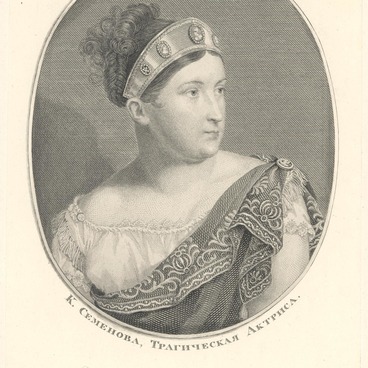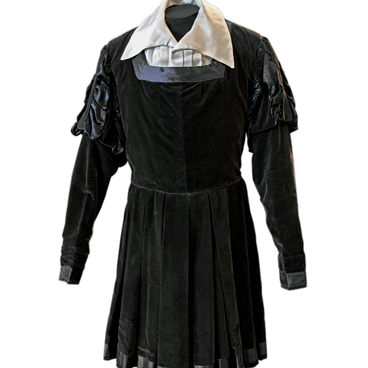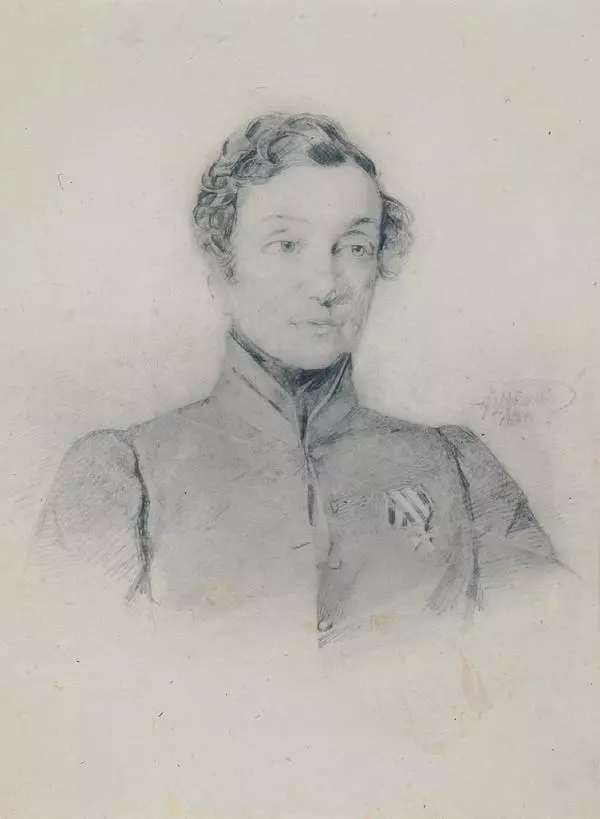Varvara Nikolayevna Asenkova was one of the most popular Russian actresses of the first half of the 19th century. She was not successful from the start, however: in 1830, Asenkova was expelled from the Saint Petersburg Theater School because of her “lack of skill.” Following the expulsion, Asenkova’s mother, who was an actress herself, asked her stage partner Ivan Sosnitsky, the famous actor of the Alexandrinsky Theater, to train her daughter. Later, Asenkova gave a wonderful performance at the benefit event organized by Sosnitsky, proving his lessons effective.
The debut of the young actress took place on January 21, 1835. That evening, she was to perform in two vaudevilles — “Suleiman the Second, or the Three Sultanas, ” and “Lorgnette, or Truth Hurts.” The audience welcomed Asenkova, and a year later the actress officially joined the troupe of the Alexandrinsky Theater.
Vaudevilles were quite popular at that time, and Asenkova played young heroines and cornets. She was especially good at travesti when she dressed up in a men’s suit and played a principal boy. Such roles included, for example, Junker Lelev from the vaudeville “The Hussar Station, or Fighting Fire with Fire, ” or the Count’s page Chérubin from the play “The Marriage of Figaro” by Beaumarchais.
Apart from vaudeville characters, Varvara Asenkova’s repertory also included tragic roles. When she played Shakespeare’s Ophelia, Asenkova chose psychological insights and realism over ostentatious pathos and clichés. The actress also played Sofia in Griboedov’s “Woe from Wit” and the Mayor’s daughter Maria Antonovna in Nikolai Gogol’s play “The Government Inspector.”
Asenkova’s dream was to have the leading role in the play “Esmeralda, or the Four Kinds of Love”, which was inspired by Victor Hugo’s novel “The Hunchback of Notre Dame.” However, Emperor Nicholas I flatly refused to grant permission for the staging, because the novel mentioned revolution, and the memories of the Decembrist Revolt were still vivid.
The play was eventually rewritten: the setting and characters’ personalities were changed with the exception of the characters’ names. In 1837, after being reviewed by the censorship committee, the play that was translated by the actor Vasily Andreyevich Karatygin was staged at the Alexandrinsky Theater with Varvara Asenkova as Esmeralda.
The debut of the young actress took place on January 21, 1835. That evening, she was to perform in two vaudevilles — “Suleiman the Second, or the Three Sultanas, ” and “Lorgnette, or Truth Hurts.” The audience welcomed Asenkova, and a year later the actress officially joined the troupe of the Alexandrinsky Theater.
Vaudevilles were quite popular at that time, and Asenkova played young heroines and cornets. She was especially good at travesti when she dressed up in a men’s suit and played a principal boy. Such roles included, for example, Junker Lelev from the vaudeville “The Hussar Station, or Fighting Fire with Fire, ” or the Count’s page Chérubin from the play “The Marriage of Figaro” by Beaumarchais.
Apart from vaudeville characters, Varvara Asenkova’s repertory also included tragic roles. When she played Shakespeare’s Ophelia, Asenkova chose psychological insights and realism over ostentatious pathos and clichés. The actress also played Sofia in Griboedov’s “Woe from Wit” and the Mayor’s daughter Maria Antonovna in Nikolai Gogol’s play “The Government Inspector.”
Asenkova’s dream was to have the leading role in the play “Esmeralda, or the Four Kinds of Love”, which was inspired by Victor Hugo’s novel “The Hunchback of Notre Dame.” However, Emperor Nicholas I flatly refused to grant permission for the staging, because the novel mentioned revolution, and the memories of the Decembrist Revolt were still vivid.
The play was eventually rewritten: the setting and characters’ personalities were changed with the exception of the characters’ names. In 1837, after being reviewed by the censorship committee, the play that was translated by the actor Vasily Andreyevich Karatygin was staged at the Alexandrinsky Theater with Varvara Asenkova as Esmeralda.









